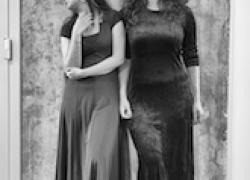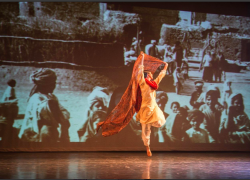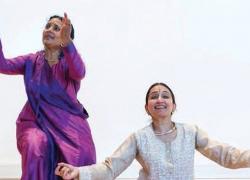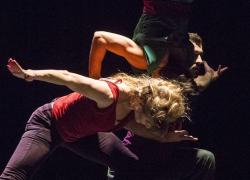Void - Jane Chan
Resolutions
Place Theatre London
11 January 2019
Reviewed by Sanjeevini Dutta
With a bowed back, the dancer twitches, shakes, retches and peers crouching. It seems incredible that these could be the verbs to describe sections of a dance solo which is opening the Resolutions platform (for new choreography) at London’s Place Theatre. Yet in Jane Chan’s debut choreography the movements to describe fear, confusion and dislocation are turned into poetry by dancer’s authentic embodiment of age and dementia. Born in Hong Kong, Chan lives and works between the UK and her birthplace and Void is an homage to her grandmother who could still be reached by music and dance in the nether state of dementia.
Void opens with the seated dancer’s back to the audience, head bowed that is gradually raised. When she turns it is not to face the audience but in a desperate search for something that has been lost. The palms touch the ground, feeling for an object or a memory; the arms extend in different angles and directions exploring the space around her. The dancer is dressed in a white frock with a bow at the waist. She is the epitome of a ‘little old woman’. Yet through that Chan maintains the grace, the extension and perfect lines of a classically trained dancer. In that we have the beauty of the paradox - the simultaneous impression of a crumpled old woman and a dancer in control of her craft.
Chan uses the three levels of the floor, the knees and the upright. The action is contained within a rectangle of white light, downstage left which expands and contracts as the coverage of space demands. However most of the action takes place in a restricted space symbolising the trapped condition of the body and mind. The moods change between gentle remembrance on things passed to the body being seized by forces beyond its control. The original score by Frankie Chan alternates between lyrical piano melodies to build up to thumping rhythms and harsh electronic sounds that follow the inner emotional landscape.
In the third section with an upright stance, Chan moves in space with rhythmic footwork and the pirouettes she executes are flawless. Drawing from her training in kathak under Amina Khayyam, Chan incorporates pure dance sections seamlessly which enrich the piece with its dynamism without distracting from the baseline or the sthai bhava, (underlying mood). The recurring phrases of hand under the throat as if some words needed to be thrown up; the nervous fingers meeting at the chest; the shaking underscore the work.
In the final movement a diagonal corridor of warm yellow wash opens up. The bow at the dancer’s waist is pulled open and as the translucent fabric falls from it we have a vision of softness, light and radiance. The body is released from the shackles of its condition and the soul set free. The dancer covers space and her movements have the openness- shoulders relax arms are thrown open and the expression is that of a young bride on the threshold of a journey, full of hope.
It is a fitting ending to a piece which is well structured, (commend the dramaturg) and superbly performed. The dancer remains in character throughout keeping a focus which never slacks. The intensity of emotion, the attention to detail and the conviction of the artist makes Void powerful dance theatre.
Void is followed hip-hop dancer-choreographer Joshua Nash performing with Jordan Douglas in The Blacklist. The duo dazzle with their technique, in twenty-five minutes of pure delight.
Concluding the evening is No Sudden Moves by Tribe a recently-formed dance company from Brighton, under choreographer Victoria Fox. The ensemble has oodles of energy and enthusiasm, but the piece could do with more self-questioning and ruthless editing.





















